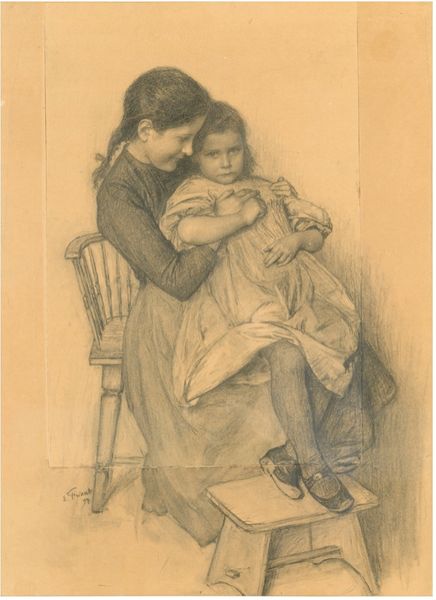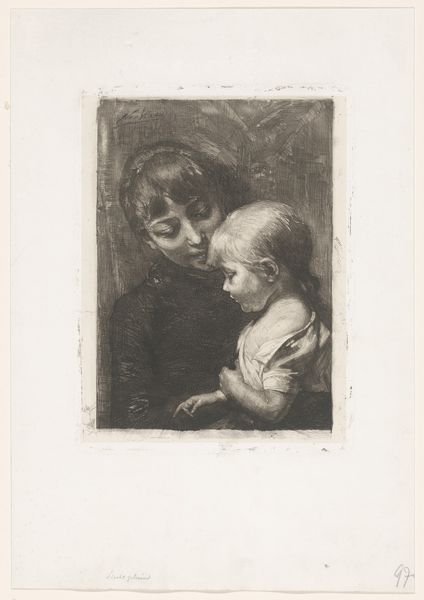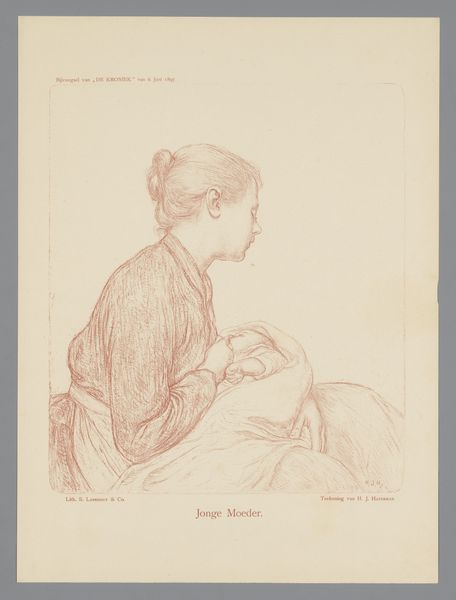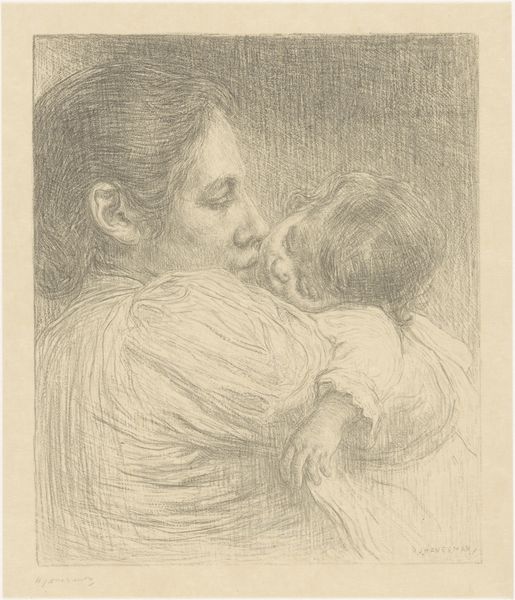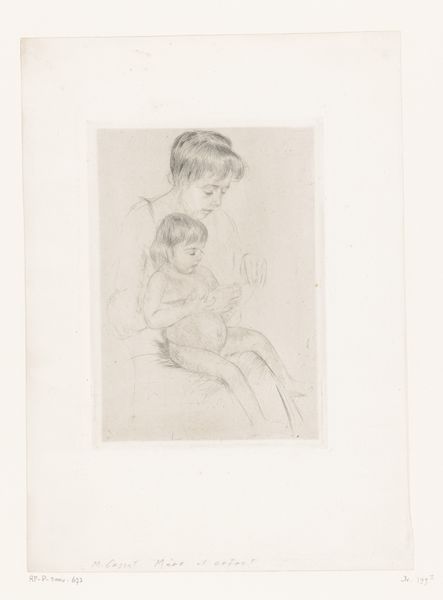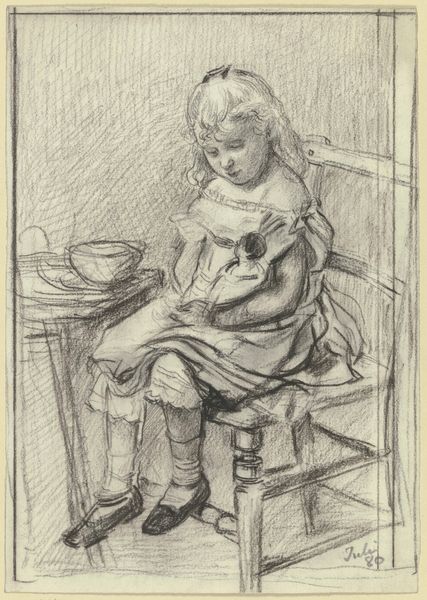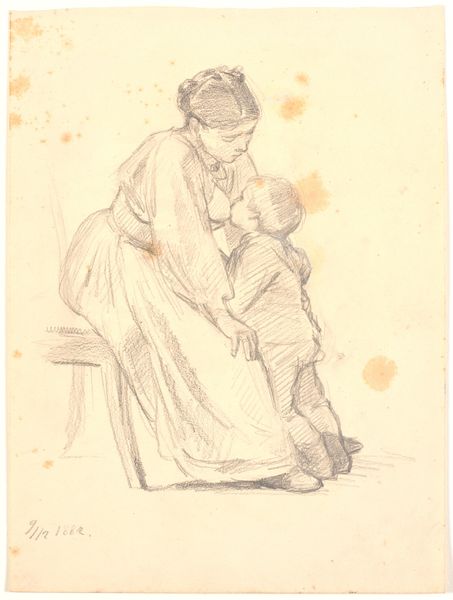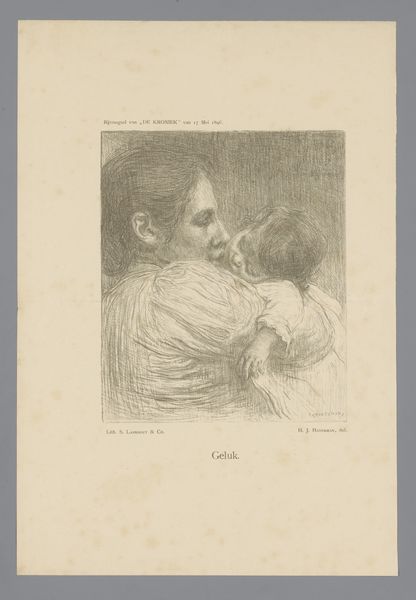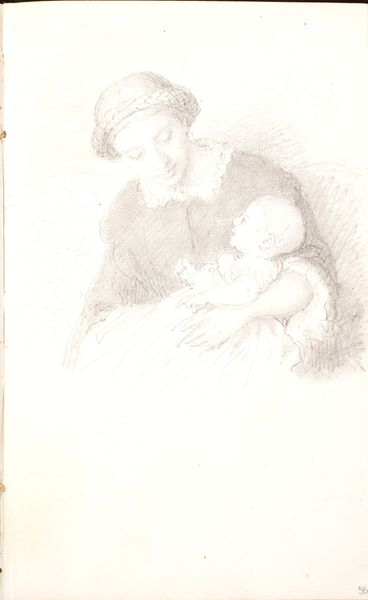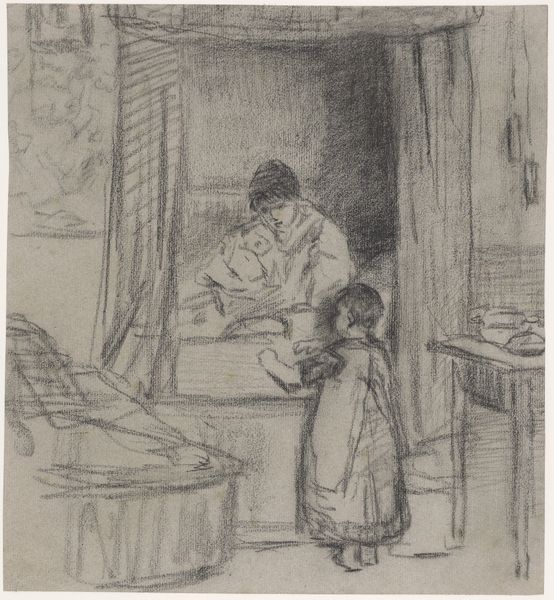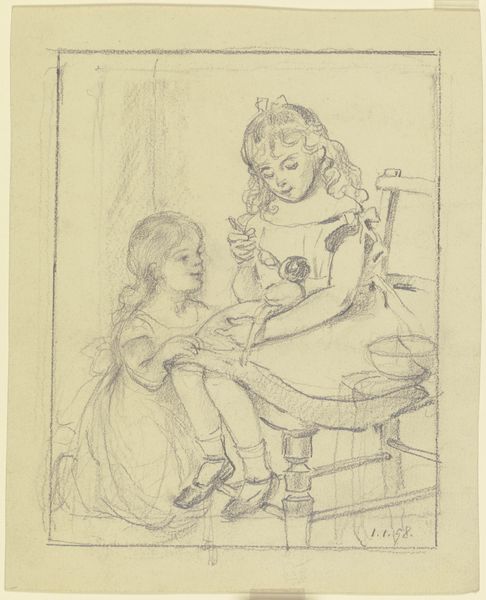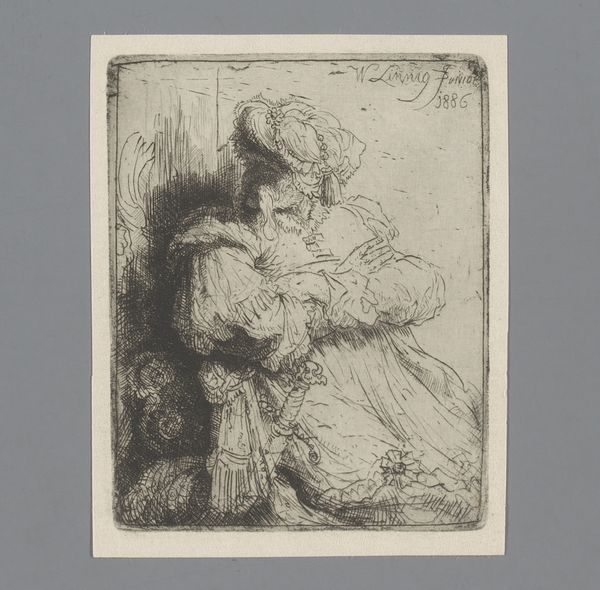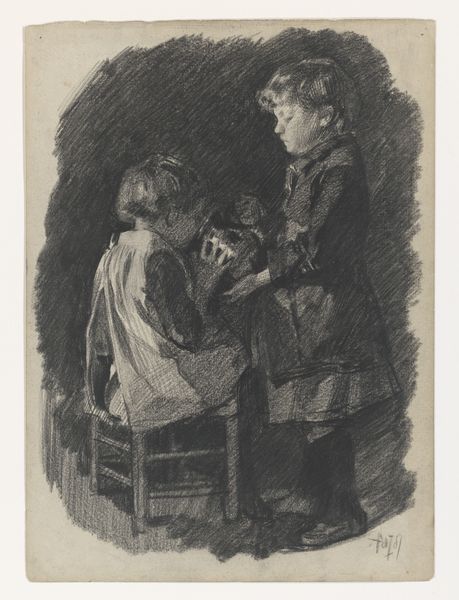
print, etching
#
portrait
# print
#
etching
#
figuration
#
intimism
#
genre-painting
Dimensions: height 60 cm, width 40 cm
Copyright: Rijks Museum: Open Domain
Curator: This etching, "Moeder en Kind"—Mother and Child—likely dates to 1898 and comes to us from the hand of Hendrik Johannes Haverman. It’s currently held in the Rijksmuseum collection. Editor: The tender mood really strikes me. There’s such a protective embrace suggested in this reddish-brown print of a mother leaning over, focusing intently on what her child is doing with her hands. Curator: Absolutely. It participates in the genre of Intimism, very popular in the late 19th century, capturing the quiet moments of domestic life. These glimpses often offered idealized visions of family, though I believe here it avoids slipping too far into sentimentalism. Editor: I agree; it feels grounded. The repeating circles formed by their arms and the round shapes of their faces direct our attention to the hands in the center. It almost feels like a ritual of knowledge transfer, like the mother is guiding her daughter through some ancient, unspoken understanding. Curator: That reading aligns with the larger historical context too. Women's roles were evolving, and portrayals like this emphasize not only nurturing but also the passing down of skills and traditions between generations. And as print, rather than painting, this work becomes accessible to a wide public, embedding and promoting those family roles. Editor: It's more than just how-to knowledge, isn’t it? It's emotional. The woman is showing the child both how to accomplish something and how to care about it. She’s communicating values through her patient presence and tender actions. Curator: These genre paintings, and intimate portrayals of motherhood in particular, become crucial in solidifying those ideas, the ideals. And while seemingly simple, works like this often played an important part in shaping perceptions of womanhood and family. Editor: Right. We're not just looking at a scene; we’re looking at the formation of a feeling. It feels intensely concentrated on the link between two generations. Curator: This print resonates so strongly, and I think precisely because Haverman understands that portrayal. I mean, to evoke so much of the cultural values of motherhood, childhood, the home through the medium of a simple print seems incredibly powerful to me.
Comments
No comments
Be the first to comment and join the conversation on the ultimate creative platform.

